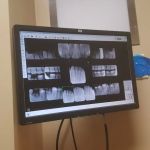
- Signs-of-Oral-Bacterial-Infection-in-Adults
- Understanding-Oral-Bacterial-Infection-Symptoms
- Causes-and-Risk-Factors-for-Oral-Bacterial-Infections
- Real-Life-Examples-of-Oral-Bacterial-Infections
- Professional-Advice-and-Care-Options
1. Recognizing the Signs of Oral Bacterial Infection in Adults
Oral bacterial infections can develop quietly but often present clear signs if you know what to look for. Many adults experience symptoms that are subtle at first but progress if left untreated. Common signs include persistent bad breath (halitosis), red or swollen gums, bleeding during brushing or flossing, and unusual mouth sores that do not heal within two weeks. These symptoms point towards an active bacterial presence disrupting the natural balance in your mouth.
It’s important to understand that these signs are not merely annoyances; they reflect underlying inflammation and tissue damage caused by harmful bacteria. For instance, gingivitis, an early stage of gum disease, manifests as redness and swelling, signaling that bacteria are attacking the gum tissue. If ignored, this can escalate into periodontitis, which risks tooth loss and systemic health complications.
1.1 Early Detection Matters
One key to managing oral bacterial infections effectively is early detection. Adults often dismiss mild symptoms like slight gum tenderness or occasional bad breath, not realizing these could be early indicators of infection. Paying attention to these small changes allows you to seek timely treatment and prevent severe damage.
2. Understanding Oral Bacterial Infection Symptoms in Detail
Symptoms of oral bacterial infection go beyond visible signs. Pain or discomfort while chewing, increased tooth sensitivity, and a metallic taste in the mouth often accompany infections. A more advanced infection can lead to pus formation near the gums, indicating abscess development, which requires immediate professional care.
Additionally, systemic symptoms such as low-grade fever and swollen lymph nodes under the jaw may occur, reflecting the body’s immune response. These symptoms highlight the seriousness of untreated oral infections and their potential to affect overall health.
2.1 Why Symptoms Vary Among Adults
Each adult may experience different symptoms based on factors like immune system strength, oral hygiene habits, and presence of other health conditions such as diabetes. This variability means that a personalized approach to symptom evaluation and treatment is essential.
3. Causes and Risk Factors for Oral Bacterial Infections
Understanding what causes oral bacterial infections is crucial for prevention. These infections usually arise from poor oral hygiene, which allows plaque—a sticky film of bacteria—to accumulate on teeth and gums. Other contributing factors include smoking, high sugar diets, dry mouth conditions, and certain medications that reduce saliva production.
Moreover, adults with weakened immune systems, whether due to chronic illness or stress, are more susceptible to infections. Hormonal changes, such as those during pregnancy or menopause, can also alter the oral environment, increasing the risk of bacterial overgrowth.
3.1 The Role of Dental Care Routine
Regular brushing, flossing, and professional dental cleanings are vital in removing bacterial plaque and preventing infection. Skipping routine care allows bacteria to thrive and initiate harmful changes in the oral cavity.
4. Real-Life Examples Illustrating Oral Bacterial Infections
Consider the case of Mark, a 45-year-old who ignored early gum bleeding for months. Eventually, he developed painful gum abscesses requiring urgent dental treatment. His story is common: initial mild symptoms often go unreported, leading to complicated infections.
Another example is Linda, a busy professional whose persistent bad breath and tooth sensitivity were signs of a chronic bacterial infection. After visiting Dentistry Toothtruth, she received a tailored treatment plan including deep cleaning and targeted antibacterial therapy, which dramatically improved her oral health and confidence.
4.1 Lessons from These Cases
These examples highlight the importance of not overlooking early symptoms and seeking professional advice. Timely intervention can save teeth, prevent pain, and improve quality of life.
5. Professional Advice and Care Options for Managing Oral Bacterial Infections
When signs of oral bacterial infection are detected, professional dental evaluation is essential. Dentists can perform thorough examinations, including X-rays and bacterial cultures, to identify the extent of infection.
Treatment typically involves professional cleaning to remove plaque and tartar, combined with antiseptic mouth rinses and sometimes antibiotics in severe cases. Maintaining good oral hygiene practices at home remains critical in preventing recurrence.
For adults seeking reliable care and suitable oral health products, Dentistry Toothtruth offers expert guidance and customized solutions. Whether you need specialized dental treatments or quality oral care products, Dentistry Toothtruth is a trusted source to support your oral health journey.
5.1 Preventive Measures to Consider
Beyond treatment, prevention strategies such as regular dental visits, balanced nutrition, and avoiding tobacco can drastically reduce the risk of oral bacterial infections. Awareness and proactive care are the best defenses for maintaining healthy teeth and gums well into adulthood.







 Freeport Kids Dental & Orthodontics4.0 (235 review)
Freeport Kids Dental & Orthodontics4.0 (235 review) Palo Alto Orthodontics5.0 (249 review)
Palo Alto Orthodontics5.0 (249 review) Michael Tabbah, D.M.D.5.0 (2 review)
Michael Tabbah, D.M.D.5.0 (2 review) Innovate Dental4.0 (142 review)
Innovate Dental4.0 (142 review) Judah Garfinkle, D.M.D., M.S.3.0 (3 review)
Judah Garfinkle, D.M.D., M.S.3.0 (3 review) West Coast Dental of South Gate3.0 (495 review)
West Coast Dental of South Gate3.0 (495 review) The Importance of Oral Health Education During Pregnancy for a Healthy Pregnancy
The Importance of Oral Health Education During Pregnancy for a Healthy Pregnancy Best Tips for Brushing Your Teeth Properly for Healthy Gums: Essential Techniques for Oral Health
Best Tips for Brushing Your Teeth Properly for Healthy Gums: Essential Techniques for Oral Health Why Skipping Dental Checkups Can Lead to Bigger Oral Health Problems
Why Skipping Dental Checkups Can Lead to Bigger Oral Health Problems Advantages of Porcelain Dental Restorations
Advantages of Porcelain Dental Restorations How Can Diabetes Cause Tooth and Gum Problems? Preventing and Managing Oral Health Issues
How Can Diabetes Cause Tooth and Gum Problems? Preventing and Managing Oral Health Issues Healthy Habits for Promoting Good Oral Health and Hygiene: Tips for a Healthy Smile
Healthy Habits for Promoting Good Oral Health and Hygiene: Tips for a Healthy Smile